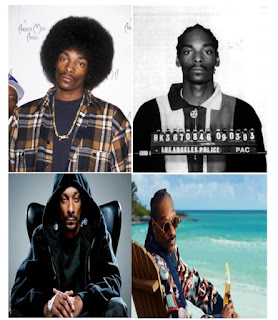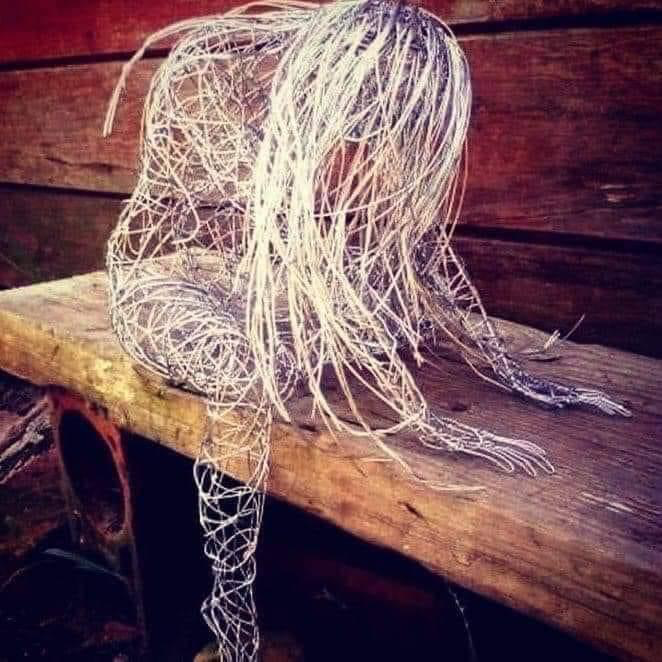Slick
In the 1970s, a new ethnic subgenre emerged known as
Blaxploitation. One of the most infamous in this category was the 1973 movie "The
Mack." In this film, the lead character, during the civil rights movement,
opted to become a "Pimp" instead. (King
2013)
Of note is that the Pimp was just the most
recent incarnation of the "Black Dandy" known as Zip Coon. The movie appeals
to the prejudice and fascination of White through the creation of a hypervisible,
hypersexed, violent, and lawless Black man. (Eshun
2016) Hip-hop would take these
creations to new highs and lows as the Pimp became normalized, stylized, and
romanticized.
Calvinn Broadus, Jr., aka Snoop Dogg, is one of Billboard's
top 10 Hip-Hop artists. He is one of the founding fathers of gansta rap and the
West Coast sound. (Lamarre
et al, 2023) Snoop
Dogg has gone from church boy to gangsta to pimp. He has gone from Snoop Dogg
to Snoop Lion to plain Slim. He brags about being the Pimp for the stars and
athletes, dealing in sex, drugs, and women across multiple states.
By whichever name you choose - Slick, Pimp, and the Mack -the Black Dandy has been a mainstay throughout American and European history. This sometimes famous, sometimes infamous, sometimes strange, sometimes loved, sometimes reviled Black character. But, he is part fiction, reality, myth, and reality that has evolved. And, of course, Snoop Dogg's best friend and mentor is none other than -Arch-Bishop Don Magic Juan, a former pimp.
The Black Dandy continues to evolve. The image ranges from the noble to the commoner, from the height of respectability to the lowest of thugs. The duplicity of these characterizations is rarely represented in one person. One of the most versatile of the latest Black Dandy is seen in the personage of Don "Magic Juan." Don "Magic Juan" (Born Donald Campbel) has worked through many personalities associated with the Black Dnady. Born in Chicago on November 30, 1950, he is not only a former pimp but also a hip-hop artist, actor, fashion designer, and preacher. As a pimp, Don Juan recruited prostitutes and promoted them out of the record store he operated during the 1970s in Chicago. He modeled himself after Iceberg Slim, Superfly, and other media pimps. He fell in love with the flashy cars and clothes. Then one day in 1985, while smoking P.C.P., he had a vision -God told him to turn his life over to God, and four years later, he was ordained as a minister by Dr. F.L. Johnson of the Christian Ministers Congress Non-Demenational Concil, Inc. This was followed by his opening of The Magic World Christian Kingdom Church of the Royal Family. Since 1974, taken from a scene from The Mack, Don Juan has celebrated his birthday by throwing what has since been known as the Player's Ball. The Players Ball has become an annual gathering of pimps in Chicago, drawing some of the most famous and infamous pimps across America to the city.
Although the Black Dandy has often been cast as
romanticized and vilified, we should also note that many Black men have worn
this mantle. Some have also been known as preachers and again condemned. Let us
look at some of these Black Dandies, Jack Legged Preachers.
Jack Legged Preachers
Few historical and contemporary
figures stand out as much as the Black preacher. Think for a moment. Some of
the most significant movements toward liberation, equality, and democracy
within this country have been led by these men. Consider just a few that would
have to include Richard Allen, formerly enslaved person, who, with Absalom
Jones, started the African Methodist Episcopal Church. And who could forget such
giants as Adam Clayton Powel, Marcus
Garvey, Ralph Abernathy, Andrew Young, Fred Shuttlesworth, Malcolm X, and
Martin Luther King, Jr? The list is only getting started. Black preachers can be found throughout the
history of America. Black preachers can be found throughout the history of America. And they are at once one of the most villainized and idealized. For many, they are nothing more than a "Jacked-Legged Preacher."
The Jack-Legged preacher is often characterized as illiterate, vile, crocked, and even a servant of Satan. He is often looked down upon, ridiculed, and suspect. Infamous preachers such as Rev. Ike or Daddy Devine come to mind. And while the history of Black preachers defies the logic of his stereotype, the negative denotations remain. Let us look at this character and see why he has been so vilified.
Several of these preachers can be
identified. One was John Jea, who and his entire family were kidnapped and sold
into slavery in New York. He was only 2, and the year was 1773. He was forced
to go to church by His master as a form of punishment, but strangely he became
not only a devout Christian but a noted Preacher. (Bell 2013)
But, one of the most infamous and
certainly most vilified Black preachers would have to be Nat Turner. Few have
been so feared by White plantation owners representing their most dreaded
outcome. And why Nat Turner, you ask? He was first and foremost an educated
preacher who dared to use the religious lessons found in the Bible to
encourage, organize and execute a four-day rebellion of enslaved and free
Blacks in Southampton County, Virginia, in August of 1831. In the aftermath, as
the White planter elite witnessed the deadliest slave revolt in U.S. history
unfold, killing from 55 to 65 White people, a deliberate program was instituted
that would see that such a thing would never happen again. Almost immediately,
Southern White legislators made it illegal to educate enslaved and free Blacks.
They could not assemble freely. Even their worship services were under the
watchful eye of a White minister. (White, Bay, and Martin, 2021) These laws did not stop Black preachers from preaching or
Black people from reading, even though the Bible they were given was severely limited.
The official Holy Bible for Negro Slaves was an interesting document. Rather than the traditional 66 books in King James, this one only contains parts of 14. It was used to indoctrinate enslaved people into their plight as enslaved people. Therefore it starts with the creation story, skips to Joseph getting sold into slavery, then skips over the Israelite's liberation from slavery. No mention of their freedom is ever taken. Then only those parts of the New Testament which highlight submissiveness, servanthood, and allegiance to the master are found. The whole book of Revelations is missing. This "Holy Bible" went hand and hand with the laws prohibiting reading by the enslaved people and proscribed which religious tenants would be preached. (Strong 2022) And into this void steps the Black Preacher.
Of the 4,467 people lynched
between1884 and 1941, 3,300 were Black. One of the principal focuses of
lynching was a determined attempt "to destabilize the Black community and
focus on the successful and the influential -people like preachers or prominent
business owners." (Foley 2022) Such was the case of I.T. Burgess, a preacher
from Putnam County, Florida, who was hanged in 1894. His crime was accused of
instigating a revolt. A year later, Lucious Turner, another West Point, Georgia
preacher, was shot for apparently writing an insulting note to the sister of
two white brothers. And lastly, Ida B. Wells talks about a Reverend King, a minister
out of Paris, Texas, who in 1895 was beaten with a Winchester rifle and forced
to leave town. His offense, he preached against the horrific lynching of a
handyman Henry Smith. (Foley 2022) These dates hide the hundreds of black
churches that were also targeted, such as the 1882 destruction of the Emanuel
African Methodist Episcopal church in Charleston, South Carolina. What is strange
is that rather than decreasing in numbers, they have increased in the 90s and
our current era. Neither threats, bombings, nor even murders have kept the
Black preachers silent or their congregations impotent. This was seen when over
100 black pastors created a "Wall of Prayer" in support of the family
of Ahmaud Arbery as they sought justice during the courtroom trial of his
killers.
More soon..rdc








Comments
Post a Comment